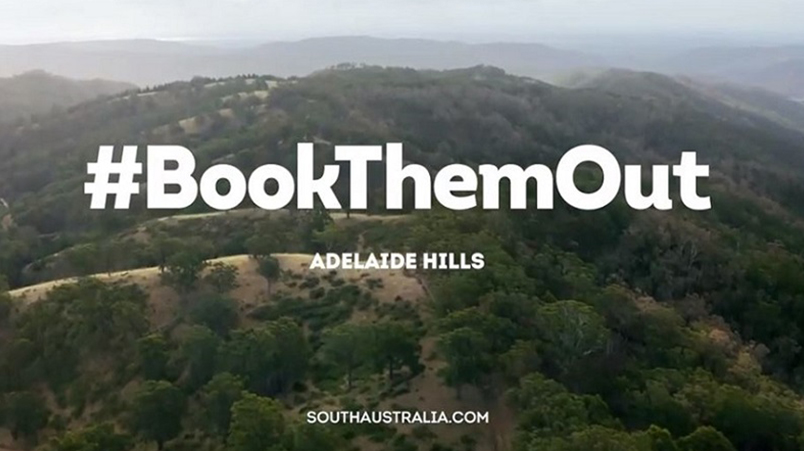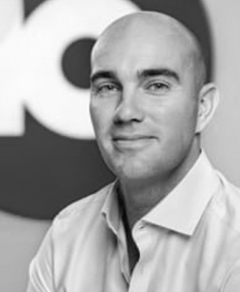Tourism Australia sidesteps TV for tech platforms

South Australia has been praised for its quick turnaround and use of TV, outdoor and print to encourage further local tourism
Following the recent advertising funding injection of $76 million from the Morrison Government, Tourism Australia has launched a new push for encouraging local tourism, with a focus on regional areas, however, the government body has elected to put the lion's share of the money into the duopoly.
All of the major networks have reported little to no spend from Tourism Australia or its media agency UM, with concerns being raised over why the medium with arguably the biggest reach in the country isn't being used.
Similarly, key radio networks have also reported briefs of less than $100,000 coming in at a time for regional radio, despite last year launching the Boomtown initiative which was geared toward promoting Australia's regional hubs.
The campaign in question is Holiday Here This Year, which is being backed by $20m of the total tourism funding.
Despite being rolled out across print, social, OOH and radio, many media execs believe Google and Facebook must be taking most of the spoils, based on the lack of activity in other media and a swathe of work seen across the likes of Instagram.
TV in standby mode
Seven, Nine and Ten have all reported minimal spend from Tourism Australia. Ten's sales boss Rod Prosser told Mi3 there was nothing significant coming through the pipeline and that conversations had gone quiet, with the expectation that spend on TV would resume once the bushfires ended.
"I don't think they are planning on spending much at all at this stage, whether that is due to some fires still going or that they are still working on the creative. However, it is an odd decision not to use the medium with the biggest reach at this time," Prosser says.
One executive who asked to remain anonymous agreed but argued that not having creative ready is a poor excuse, pointing to a 30-second piece that has been running across social as "perfectly suitable" for TV screens.
They added that it is disappointing that Tourism Australia is funnelling so much of the early investment into the social platforms, given the current conversations around how the duopoly operate locally, and their pitiful contribution to national coffers.
Directing spend offshore and "backing silicon valley over local media" is a poor look for government agencies, the executive suggested, particularly when local communities require greater investment than ever.
Nine has also seen investment limited to short-term activity in recent weeks, with some spend being channeled into the Australian Open. The tennis tournament has been running its own bushfire relief campaign, "Australia is Open", drawing attention to the importance of continued tourism during this time.
However, Nine is expecting to enter into long-term conversations over the coming weeks about how it can support ongoing activity in the next stages of Tourism Australia's efforts.
Seven also confirmed it has no TA bookings planned - but added that there may be activity to come.
"To not have TV as a medium, which is still a very big part of Australian culture and creating action with brand stories in a brand-safe medium, for a brand which is looking to connect with Australian culture to create an action, seems counter-intuitive to an optimal marketing mix," suggested Seven chief revenue officer Kurt Burnette.
"Unless there is a strategy we are unaware of it seems very unusual. Every medium has a role to play, some more than others but no TV, [neither] broadcast nor BVOD, feels like a missed opportunity for a campaign of this magnitude and importance for Australia, if indeed that is the final case."
"I don't think they are planning on spending much at all at this stage, whether that is due to some fires still going or that they are still working on the creative. However, it is an odd decision not to use the medium with the biggest reach at this time."

Pic: Rod Prosser, Network 10
Singing South Australia's praises
One tourism body that hasn't shied away from using the traditional media has been the South Australian Tourism Commission. Following the devastation caused by the bushfires, the body has quickly turned around a state-specific campaign encouraging people to visit its metro and regional tourism destinations.
The work, which has been praised for its speed to market and to-the-point nature, has run across all of the major TV, outdoor and radio networks.
It has seen a large amount of airtime throughout the Australian Open, while a long-form version of the campaign has also appeared on Seven.
The anonymous network executive praised the SA tourism team, led by Brent Hill, for being able to effectively develop a short, sharp and encouraging campaign that considers the importance of mass reach.
The exec said it provides a stark comparison to the efforts currently being made by TA and highlights how South Australia is championing local tourism compared to the rest of the country.
The campaign, “Help them out, #BookThemOut”, focuses on encouraging tourists to visit the Adelaide Hills and Kangaroo Island to boost bookings and reinvigorate local economies.
"We’ve always believed in using a combination of media to get our message out and reach is really important to us, so from that perspective what people call ‘traditional media’ still has a really big role to play," SATC executive director, marketing Brent Hill told Mi3.
"When we wanted to launch the BookThemOut campaign we knew we needed to get as a big a splash as we could. To do that we looked at things like the Australian Open, which is a massive viewership. We also did a wrap of the Sunday Mail and then tapped into digital and social."
However, Hill says a big part of investing across TV and press, roughly 60 per cent of the budget, is that the issue requires visual media to most effectively tell the full story and get the right message across.
"We became very conscious that we needed to film something post the fires and that we were showing people something authentic - not film we’d had for a year," he argues. "We needed to explain the message and that was the key factor for us, hence why we leant on TV and press. We want people to understand what we are saying, that we understand the impact and this is how we want to recover. You need to be able to give a complete picture."
Hill argues an important part of the strategy was providing initial support and positive messaging in market before launching the campaign.
He says it was important for the public not to view the work as insensitive but rather an extension of the initial efforts made during the fires and in the immediate aftermath.
“You have to be there when it is all happening and have a real and genuine approach to what you do next. For that reason, people may have been nervous to not create misinformation or overemphasise the fires - because there are still some areas dealing with the issue," he says.
"It was very real and we wanted to comment on that as fellow human beings. The key for us is that we went out early with only messages of support and well wishes, as well as how to donate, volunteer and help. Then once people had seen that, we could switch to the concept of, 'this is the next way to help them'."
As a result, he says, "no one has labelled us insensitive because they knew we were there right from the start."
"We’ve always believed in using a combination of media to get our message out and reach is really important to us, so from that perspective what people call ‘traditional media’ still has a really big role to play."

Time to increase local spend?
With the impact of the Coronavirus likely to compound an international tourism market already battered by the bushfires, there is more logic to increasing the amount of funding for local tourism.
Calls for greater local spend will likely increase if major airlines such as Qantas confirm that they are considering cancellation of some flight routes in and out of the worst hit cities.
